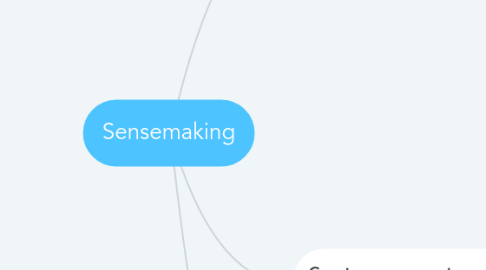Sensemaking
by liya an

1. Explore the wider system
1.1. Seek out many types and sources of data. Combine financial data with trips to the shop floor, listen to employees as well as customers, and mix computer research with personal interviews.
1.2. Involve others as you try to make sense of any situation. Your own mental model of what is going on can only get better as it is tested and modified through interaction with others.
1.3. Move beyond stereotypes. Rather than oversimplifying, try to understand the nuances of each particular situation.
1.4. Be very sensitive to operations. Learn from those closest to the front line, to customers, and to new technologies. What trends do current shifts portend for the future? What’s behind the trends that we see recurring in different parts of the world?
2. Create a map or story of the situation
2.1. Do not simply overlay your existing framework on a new situation. The new situation may be very different. Instead, let the appropriate map or framework emerge from your understanding of the situation.
2.2. Put the emerging situation into a new framework to provide organizational members with order. Use images, metaphors, and stories to capture the key elements of the new situation.
3. Act to change the system to learn from it
3.1. Learn from small experiments. If you are not sure how a system is working, try something new.
3.2. People create their own environments and are then constrained by them. Be aware and realize the impact of your own behaviour in creating the environment in which you are working.


